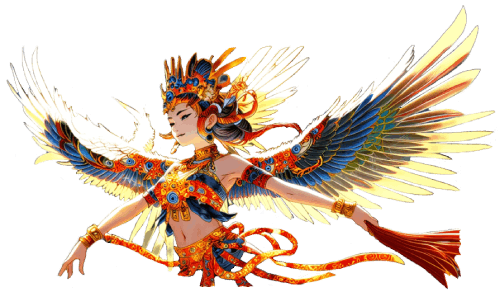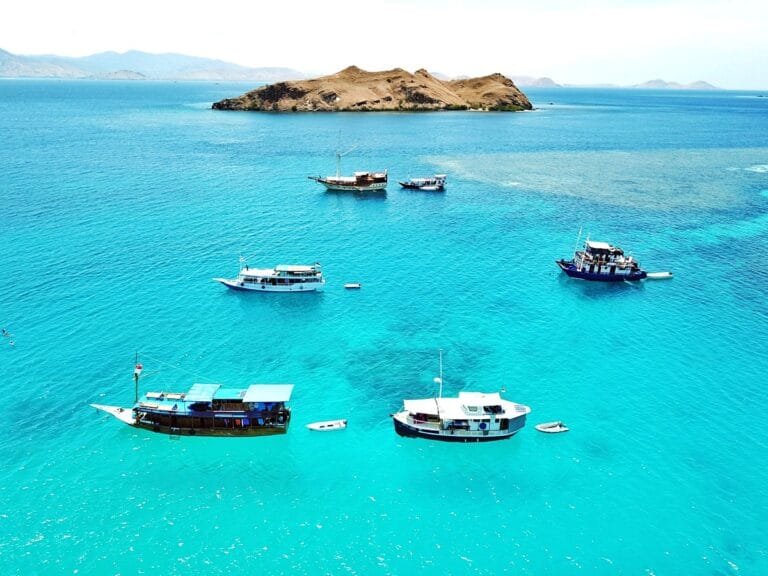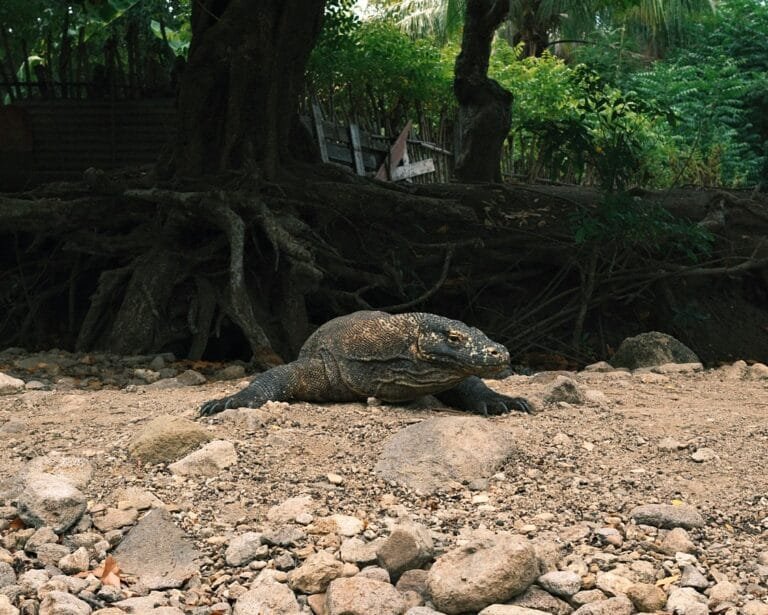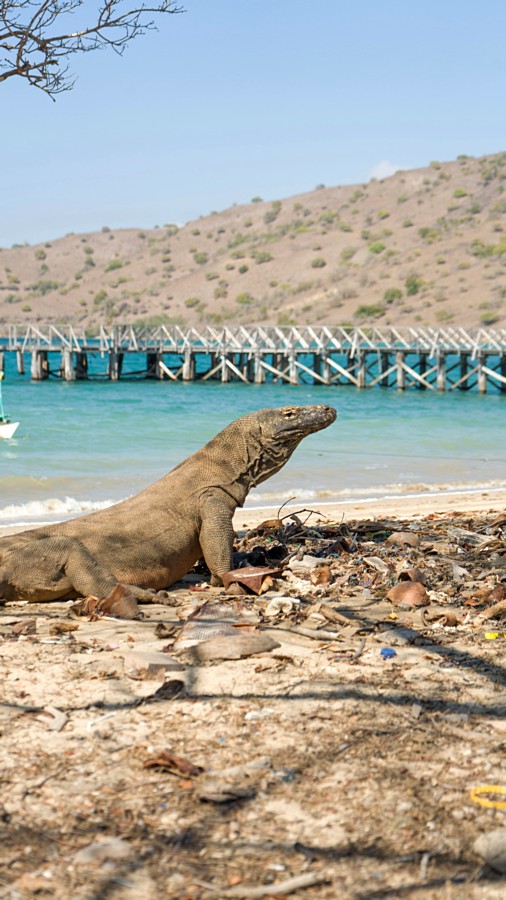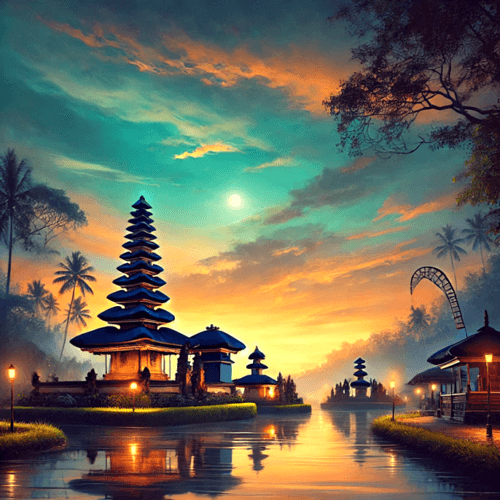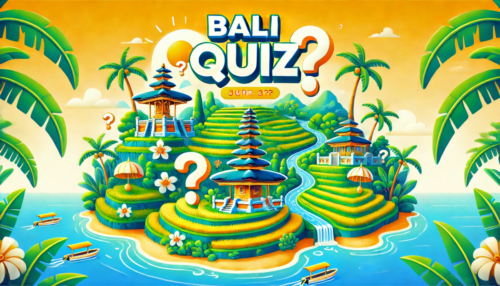On Komodo Island, the world’s last dragons roam ancient landscapes, where land meets a sea of biodiversity.
Home of the Legendary Dragons
Komodo Island, located in Indonesia’s Komodo National Park, is one of the most unique destinations on Earth. Part of the Lesser Sunda Islands, this rugged, volcanic island is famous for its prehistoric residents—the Komodo dragons. These giant lizards, the largest in the world, give the island its name and are the primary reason it has gained worldwide fame. However, Komodo Island offers much more than just its fearsome reptiles. From pristine beaches and coral reefs to rugged hiking trails, Komodo is a land where wildlife and wild landscapes come together in one unforgettable destination.
Komodo National Park, which includes the islands of Komodo, Rinca, and Padar, among others, was declared a UNESCO World Heritage Site in 1991 and remains a haven for adventure seekers, wildlife enthusiasts, and divers alike. Whether you’re hoping to get close to the legendary dragons or dive into the vibrant underwater world, Komodo Island promises an unparalleled adventure.
The Komodo Dragons: Nature’s Last Living Dinosaurs
Komodo dragons, or Varanus komodoensis, are the world’s largest lizards, growing up to 3 meters (10 feet) long and weighing over 70 kilograms (150 pounds). These apex predators have thrived in the harsh environments of Komodo Island and its neighboring islands for millions of years. Their size, strength, and carnivorous diet make them formidable hunters, capable of taking down large prey such as deer, wild boar, and even water buffalo.
Visiting Komodo Island allows travelers the rare opportunity to observe these giant reptiles in the wild. The island’s population of around 2,000 dragons roams freely, though sightings are carefully managed by rangers to ensure both visitor safety and the conservation of the species. Tours to see the dragons are conducted with trained guides, who lead visitors along marked trails through the dry, savannah-like terrain of Komodo and Rinca islands.
Despite their fearsome reputation, Komodo dragons are an essential part of the island’s delicate ecosystem. Their role as top predators helps maintain the balance of local wildlife, which includes deer, monkeys, wild pigs, and various bird species.
TIP: Always follow your guide’s instructions when observing Komodo dragons. These animals can be dangerous if provoked or startled, so maintaining a safe distance is crucial.
Exploring Komodo’s Other Wildlife and Landscapes
While the Komodo dragons are undoubtedly the stars of the island, Komodo Island is home to a wide variety of other wildlife and stunning natural landscapes. The island’s dry, rugged hills and savannahs contrast with lush coastal areas, where mangroves and forests thrive. Visitors hiking through Komodo’s trails may encounter other animals, including wild horses, deer, and various bird species like the yellow-crested cockatoo.
The island also offers stunning coastal scenery. Pink Beach, located on the northeastern shore of Komodo Island, is one of only a few pink-sand beaches in the world. The sand gets its pink hue from the red coral fragments that mix with the white sand. The beach is a fantastic place to relax, swim, or snorkel, and its calm, clear waters make it an ideal spot for observing marine life.
TIP: Don’t miss snorkeling at Pink Beach. The reef just off the shore is teeming with vibrant marine life, including colorful corals, reef fish, and sometimes even sea turtles.
Komodo National Park: A Diver’s Paradise
The waters surrounding Komodo Island are part of the Coral Triangle, one of the most biodiverse marine areas in the world. For divers, Komodo National Park is nothing short of paradise, offering some of the best dive sites in the world. The park’s strong currents bring nutrient-rich waters, attracting a dazzling array of marine life, including manta rays, sharks, turtles, and hundreds of species of fish.
Batu Bolong is one of the most famous dive sites in the park, featuring a steep coral wall teeming with life. Divers often encounter large schools of fish, sea turtles, and reef sharks. Another popular spot is Manta Point, where manta rays gather to feed and be cleaned by smaller fish. Castle Rock and Crystal Rock are also well-known for their incredible visibility and abundance of marine species, from colorful nudibranchs to large pelagics like sharks and barracudas.
For those who prefer to stay at the surface, the snorkeling in Komodo National Park is just as spectacular. Kanawa Island and Siaba Besar are excellent snorkeling spots, offering shallow reefs full of vibrant corals and tropical fish.
TIP: The best time for diving in Komodo is during the dry season, from April to December, when the waters are clearest, and marine life is most active.
Hiking and Views: Padar Island
Although Komodo and Rinca are the main islands for spotting Komodo dragons, a visit to Padar Island is highly recommended for its breathtaking landscapes. Padar is famous for its dramatic hills and bays, and the island’s most iconic viewpoint offers a panoramic view of its three crescent-shaped beaches, each with different-colored sand—white, black, and pink.
The hike to the top of Padar Island takes about 30 to 45 minutes and is relatively easy, with stairs leading to the viewpoint. The effort is well worth it, as the views from the summit are among the most stunning in Indonesia.
TIP: Start your hike on Padar Island early in the morning or late in the afternoon to avoid the midday heat and enjoy the golden hour lighting for photos.
Conservation and Responsible Tourism
As one of the most unique ecosystems in the world, Komodo National Park faces significant conservation challenges. Over the years, the growing number of tourists has put pressure on the environment, from the land to the surrounding coral reefs. The Indonesian government and conservation organizations are working hard to manage tourism sustainably, ensuring that Komodo dragons and the park’s marine life are protected for future generations.
Visitors to Komodo Island are encouraged to respect the environment by following the guidelines set by park authorities. This includes not littering, refraining from touching corals or marine life, and supporting eco-friendly tour operators.
TIP: When planning your visit, choose tour operators that prioritize sustainability and adhere to conservation guidelines, such as limiting the number of visitors and ensuring waste is properly managed.
Practical Information for Visiting Komodo Island
- Best time to visit: The dry season, from April to December, is the best time for visiting Komodo Island, as the weather is clear, and conditions are perfect for hiking, diving, and wildlife viewing.
- Getting there: Most visitors reach Komodo Island via Labuan Bajo, a small port town on the island of Flores. Labuan Bajo is accessible by flights from Bali or Jakarta. From Labuan Bajo, travelers can take a boat to Komodo, Rinca, and Padar islands.
- Accommodation: There are no accommodations on Komodo Island itself, so most visitors stay in Labuan Bajo, which offers a range of accommodation options, from budget hostels to mid-range hotels and luxury resorts. For those seeking a more immersive experience, liveaboard boats offer multi-day trips that include diving and island hopping in the park.
- Entry fee: Visitors to Komodo National Park must purchase an entry ticket, which helps fund conservation efforts in the area. Additional fees may apply for diving and trekking tours.
Komodo Island: A Journey into the Wild
Komodo Island offers a rare opportunity to step back in time and witness one of nature’s greatest wonders—the Komodo dragons—while exploring a landscape that feels both ancient and untouched. Whether you’re trekking in search of these giant lizards, diving among some of the richest marine life on the planet, or soaking in the views from Padar Island, Komodo National Park offers an adventure like no other.
For travelers seeking a truly wild and unforgettable experience, Komodo Island promises to leave you in awe of Indonesia’s natural beauty and the incredible creatures that call it home.





